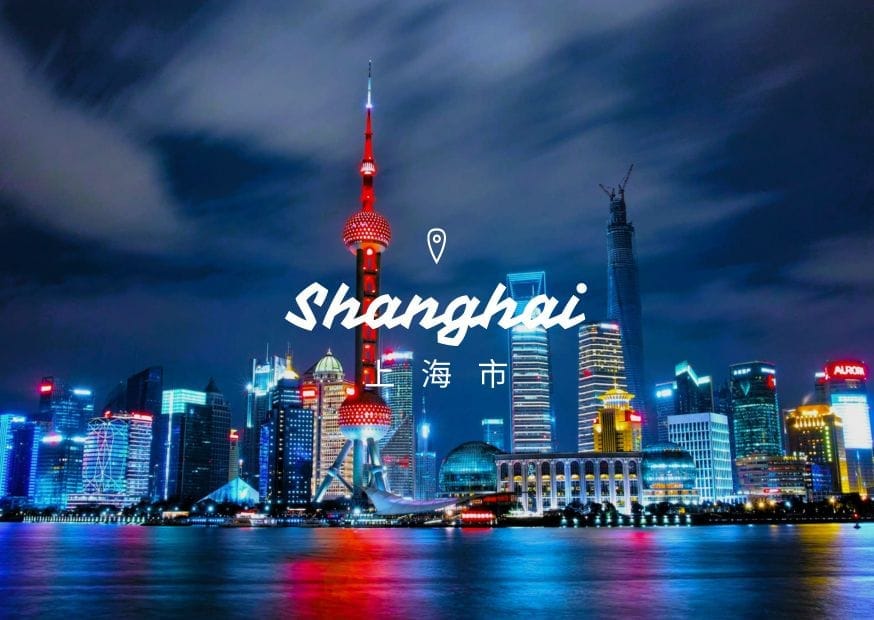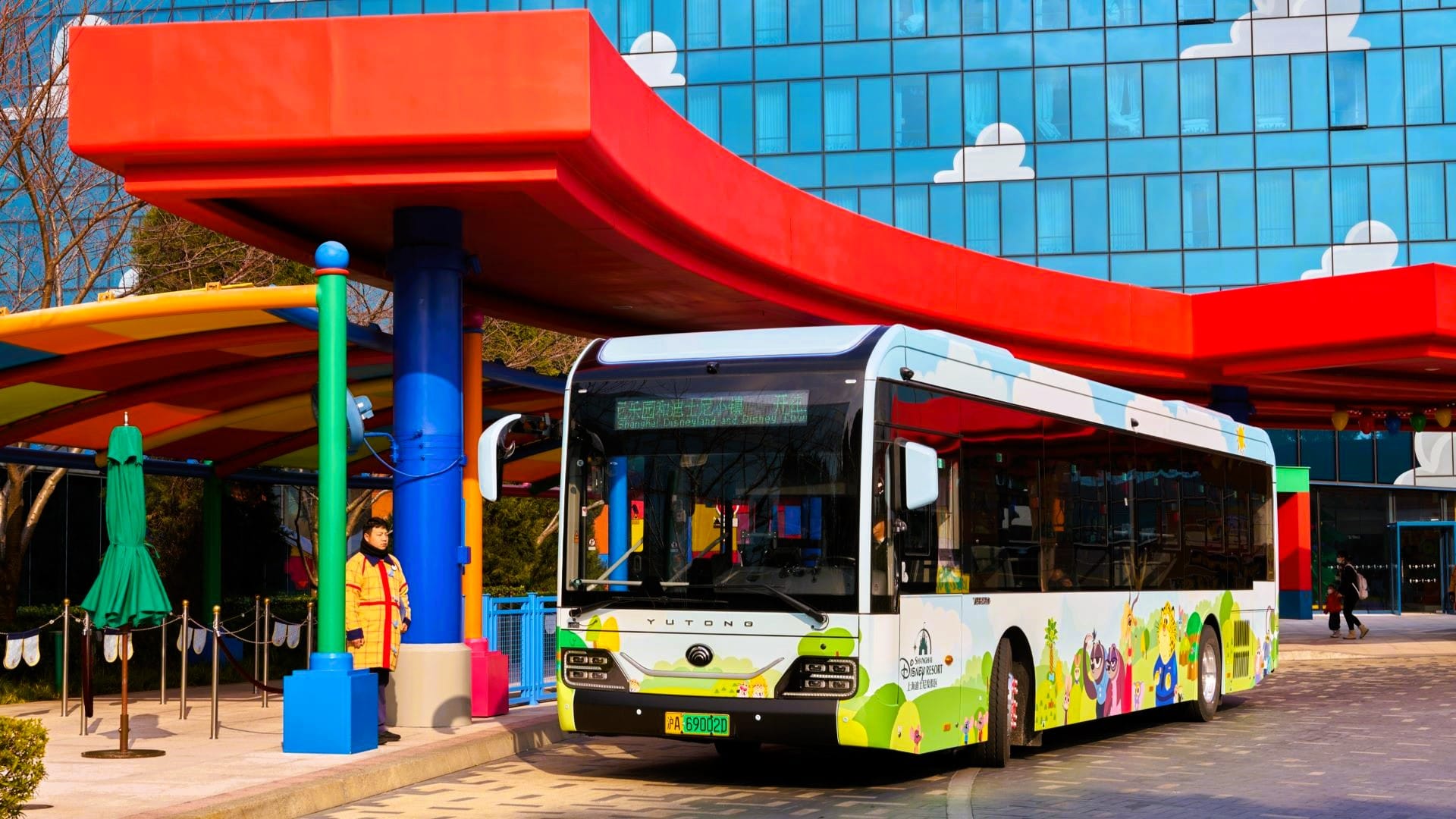Shanghai, China’s largest city and a global metropolis, is a sprawling urban jungle that can seem daunting to first-time visitors. However, its world-class public transport system makes getting around surprisingly easy, efficient, and budget-friendly. From an extensive metro network to buses, ferries, and even high-speed trains, Shanghai offers a variety of options to explore its iconic landmarks, bustling neighborhoods, and hidden gems. As someone who has navigated this city’s transit system extensively, I’ve put together this detailed guide to help tourists master Shanghai’s public transport. With these tips, you’ll travel like a local, save money, and make the most of your time in this vibrant city. Let’s get moving!
Why Use Public Transport in Shanghai?
Shanghai’s public transport is a lifeline for its 24 million residents and a boon for tourists. It’s affordable (fares often under 10 CNY per trip), reliable, and covers virtually every corner of the city, from the historic Bund to the futuristic Pudong district. Unlike taxis, which can be expensive during peak hours or hard to hail due to language barriers, public transport offers consistency and avoids traffic snarls. Plus, it’s eco-friendly and gives you a glimpse into daily Shanghai life—think locals commuting, students chatting, and vendors bustling. Whether you’re here for a weekend or a week, mastering the system will save you time, money, and stress.
1. Shanghai Metro: The Backbone of City Travel
The Shanghai Metro is one of the largest and busiest subway systems in the world, with 19 lines (and growing), over 400 stations, and coverage across urban and suburban areas. It’s the go-to option for most tourists due to its speed, affordability, and English-friendly signage.
- How It Works: Lines are color-coded and numbered (e.g., Line 2 is green, connecting key spots like the Bund and Pudong). Trains run from around 5:30 AM to 11:30 PM, with peak hours (7-9 AM, 5-7 PM) seeing frequent services every 2-3 minutes. Fares range from 3-10 CNY based on distance, calculated automatically when you tap in and out.
- How to Use: Purchase a single-journey ticket or a rechargeable Shanghai Public Transportation Card (see below) at station kiosks or machines (English options available). Scan your ticket/card at entry turnstiles, follow signs to your platform, and listen for announcements (often in English). Maps inside trains and stations show stops in both Chinese and English.
- Key Lines for Tourists:
- Line 2 (Green): Connects East Nanjing Road (near the Bund), People’s Square, Lujiazui (Pudong landmarks like Oriental Pearl Tower), and Pudong International Airport.
- Line 1 (Red): Links People’s Square, South Huangpi Road (near Xintiandi), and Shanghai Railway Station.
- Line 10 (Light Purple): Accesses Yuyuan Garden (Old City) and South Shaanxi Road (French Concession).
- Line 11 (Dark Red): Reaches Shanghai Disneyland Resort at the end of the line.
- Why It’s Great: It’s fast (often quicker than taxis in traffic), cheap, and air-conditioned—perfect for Shanghai’s hot summers or chilly winters.
- How to Get Started: Download the “Shanghai Metro” app (Metro Man) for real-time schedules, maps, and route planning in English. Most central stations like People’s Square or Jing’an Temple have English-speaking staff or info desks.
- Tip: Avoid peak hours if possible—trains get packed, and standing room can be tight. Keep your ticket/card handy for exiting, and stand to the right on escalators to let others pass.
2. Shanghai Public Transportation Card: Your All-in-One Pass
For seamless travel across multiple modes of transport, get a Shanghai Public Transportation Card (also called Jiaotong Card). This rechargeable smart card works on the metro, buses, ferries, and even some taxis, saving you the hassle of buying individual tickets.
- How It Works: Buy the card at metro station service counters or convenience stores like FamilyMart for 20 CNY (non-refundable deposit) and load it with credit (50-200 CNY to start). Tap it at entry points for metro or bus; fares are deducted automatically. Balances can be checked and topped up at station machines or counters.
- Benefits: It’s cheaper than single tickets (slight discounts on transfers within 2 hours), eliminates the need for exact change on buses, and works across different transport types. You can also use it for small purchases at some shops.
- Where to Use: Valid on all metro lines, most city buses, Huangpu River ferries, and the Maglev train (with sufficient balance).
- Why It’s Great: It simplifies travel, especially if you’re hopping between modes or making multiple trips daily. No need to queue for tickets each time.
- How to Get One: Head to any metro station service center (e.g., People’s Square or East Nanjing Road). Ask for “Jiaotong Ka” (Transportation Card). Refunds for unused credit are possible at select stations like Pudong Airport before leaving, minus the deposit.
- Tip: Load enough credit for a few days (100-150 CNY) to avoid frequent top-ups. Keep it separate from other cards to prevent scanning issues, and don’t bend it.
3. City Buses: Scenic and Budget-Friendly
Shanghai’s bus network complements the metro, reaching areas not directly served by subway lines and offering a more scenic way to see the city. With thousands of routes, it’s ideal for short hops or exploring neighborhoods.
- How It Works: Buses operate from around 5 AM to 11 PM, with fares at a flat rate of 2 CNY per ride (payable by Transportation Card or exact cash—no change given). Routes are numbered, with key tourist lines like 71 (trolleybus to the Bund) or 911 (near People’s Square) often listed in English at stops. Announcements may be Chinese-only, but major stops are sometimes in English.
- How to Use: Board at the front, tap your card or drop cash into the fare box, and exit at the back. Use apps like Google Maps or Baidu Maps to find routes and stops—input your destination, and it’ll suggest bus numbers. Look for bus stop signs with route maps (often bilingual in central areas).
- Key Routes for Tourists:
- Bus 71 (Trolleybus): Runs along the Bund and Nanjing Road, offering a nostalgic ride with scenic views.
- Bus 20: Connects the Bund to People’s Square and nearby attractions.
- Sightseeing Buses: Double-decker hop-on-hop-off buses (around 30 CNY for a day pass) cover major landmarks like the Bund, Yu Garden, and Pudong, with English audio guides.
- Why It’s Great: Buses are cheaper than the metro for short distances and let you see street life up close—think vendors, parks, and local bustle from your window.
- How to Get Started: Check bus stops near metro stations for route info, or ask hotel staff for specific lines to your destination. Carry a Transportation Card to avoid cash hassles.
- Tip: Buses can be slow during rush hours due to traffic—plan extra time. Stand near the door if your stop is soon, as drivers may not wait long. Watch for pickpockets in crowded buses.
4. Huangpu River Ferries: A Scenic Crossing
For a unique and inexpensive way to travel between Puxi (west of the river) and Pudong (east), take a Huangpu River ferry. It’s both a mode of transport and a mini sightseeing experience with views of Shanghai’s iconic skyline.
- How It Works: Ferries run between key piers like Dongchang Road (Pudong, near Lujiazui) and Jinling East Road (Puxi, near the Bund) from around 7 AM to 10 PM. Fares are just 2 CNY per trip, payable by Transportation Card or cash at ticket counters. Crossings take about 10-15 minutes.
- How to Use: Find ferry terminals near major landmarks (look for signs with a boat icon). Buy a ticket or tap your card, board the ferry, and enjoy the open-air deck for photos of the Bund and Pudong skyscrapers. Schedules are frequent (every 10-20 minutes), posted at terminals.
- Why It’s Great: It’s a dirt-cheap way to see Shanghai’s famous waterfront, offering a break from underground metro rides. Kids and adults alike love the quick boat trip.
- How to Get Started: Start from the Bund side (near Nanjing East Road metro) and cross to Pudong for attractions like the Oriental Pearl Tower, or vice versa.
- Tip: Ride at sunset or night for stunning illuminated views of the skyline. Hold onto railings on windy days, and keep an eye on kids near the water’s edge.
5. Shanghai Maglev Train: High-Speed Airport Connection
If you’re arriving at or departing from Pudong International Airport (PVG), the Shanghai Maglev Train offers a futuristic, high-speed ride to the city’s edge, reaching speeds of 431 km/h (268 mph)—the fastest commercial train in the world.
- How It Works: The Maglev connects Pudong Airport to Longyang Road Station (near metro Line 2) in just 7-8 minutes, running from 6:45 AM to 9:40 PM. Fares are 50 CNY one-way (40 CNY with a Transportation Card) or 80 CNY round-trip. Tickets are bought at counters or machines at the airport or Longyang Road.
- How to Use: At Pudong Airport, follow signs to the Maglev terminal (near Terminal 2). Buy a ticket, board the sleek train, and transfer to metro Line 2 at Longyang Road to reach central Shanghai. Digital displays show speed—kids will love watching it climb!
- Why It’s Great: It’s a thrilling experience and much faster than a taxi or regular train (which can take 40-60 minutes to cover the same distance). It’s a cool way to start or end your trip.
- How to Get Started: Ensure your flight times align with Maglev hours—it doesn’t run late at night. Have your Transportation Card ready for a discounted fare.
- Tip: Sit near the front for the best view of the speed display. It’s not worth it for short stays as Longyang Road requires a metro transfer to central areas—taxis might be easier if you’re in a rush.
6. Taxis and Ride-Hailing: A Backup Option
While not strictly public transport, taxis and ride-hailing apps like DiDi are useful supplements when metro or bus routes aren’t convenient, especially late at night or with heavy luggage. They’re regulated and relatively affordable compared to Western cities.
- How It Works: Official taxis are turquoise, red, or yellow, with meters starting at 14 CNY for the first 3 km, then 2.5 CNY per km. DiDi (China’s Uber equivalent) lets you book via an app, with fares slightly cheaper or comparable. Most rides in central Shanghai cost 20-50 CNY.
- How to Use: Hail taxis on the street (look for a green “available” light on the roof) or use designated stands near metro stations. For DiDi, download the app, set up an account (English version available), and link a payment method (international cards sometimes work, or use cash). Show drivers addresses in Chinese—carry a hotel card or screenshot.
- Why It’s Great: Taxis are handy for direct trips to places like Zhujiajiao Water Town or when public transport stops running. DiDi offers English support, easing language barriers.
- How to Get Started: Download DiDi before arriving, or ask your hotel to write down key destinations in Chinese for taxi drivers. Avoid unlicensed “black taxis” near tourist spots—they overcharge.
- Tip: Avoid taxis during rush hours (7-9 AM, 5-7 PM) due to traffic delays. Always insist on the meter—refuse drivers who quote flat rates. Carry small bills (20-50 CNY) as change may be limited.
Practical Tips for Using Shanghai’s Public Transport
- Planning: Use apps like “Shanghai Metro” (Metro Man), Google Maps, or Apple Maps for route planning—most support English and show real-time updates. Have a paper map or screenshot as a backup in case of no internet. Check attraction proximity to metro lines when planning your day.
- Timing: Avoid peak hours (7-9 AM, 5-7 PM) on metro and buses if possible—crowds are intense, and you might not get a seat. Allow extra time for transfers, especially at huge stations like People’s Square, where walking between lines can take 5-10 minutes.
- Tickets and Fares: Always carry a loaded Transportation Card or small change (1-10 CNY coins/notes) for buses and ferries. Single metro tickets are recyclable—deposit them in machines when exiting if you don’t need them. Keep receipts or tickets until your journey ends in case of checks.
- Language: While metro signs and major bus stops have English, smaller stops or announcements may not. Use a translation app (Google Translate, Pleco) to ask for help, or point to maps. Learn basic phrases like “Zhège zhàn ma?” (Is this the stop?) for buses.
- Accessibility: Most newer metro stations have elevators and escalators for strollers or wheelchairs—look for signs. Buses may be less accessible due to steps and crowds. Staff can assist if asked (point to your needs if language is a barrier).
- Safety: Shanghai’s transport is safe, but beware of pickpockets in crowded metro cars or bus stops—keep bags zipped and close. Stand behind yellow lines on platforms, and don’t rush for closing doors. Hold onto rails during rides, especially on buses.
- Etiquette: Queue for metro entry (follow painted lines on platforms), let passengers exit before boarding, and offer seats to elderly or pregnant passengers. Avoid eating or drinking on the metro—it’s frowned upon. Keep noise low, especially on phones.
- Luggage: Metro allows small to medium bags but avoid oversized luggage during peak times—use lockers at stations (5-10 CNY) or take a taxi. Maglev and airport buses have space for suitcases.
- Connectivity: Free Wi-Fi is rare on transport, so download offline maps or apps beforehand. Buy a local SIM card (China Mobile or Unicom, 50-100 CNY) at the airport or shops for data if needed.
Sample Itineraries Using Public Transport
- Day 1: Central Shanghai Highlights
- Start at People’s Square (Metro Line 1/2/8): Visit Shanghai Museum (free entry).
- Walk or take Bus 20 to the Bund for skyline views.
- Ferry (2 CNY) from Jinling East Road to Pudong, explore Lujiazui (Oriental Pearl Tower via Metro Line 2).
- Return via Metro Line 2 to East Nanjing Road for dinner and shopping.
- Day 2: Cultural and Theme Park Fun
- Metro Line 10 to Yuyuan Garden Station for Yu Garden and Old City bazaar.
- Metro Line 2 to Jing’an Temple for a historic site amid skyscrapers.
- Metro Line 11 to Shanghai Disneyland (end of line) for an evening of magic.
- Day 3: Day Trip Adventure
- Metro Line 17 to Zhujiajiao Station for a water town visit (or book a taxi/DiDi for ease).
- Return via metro, switch to Line 2 at Guanglan Road to relax at Century Park in Pudong.
Final Thoughts on Navigating Shanghai’s Transport
Shanghai’s public transport system is a tourist’s best friend—efficient, affordable, and expansive, it turns a massive city into a manageable adventure. Whether you’re zipping underground on the metro, gliding across the Huangpu River on a ferry, or speeding to the airport on the Maglev, you’ll find that getting around is half the fun of exploring this dynamic metropolis. With a Transportation Card in hand, a downloaded metro app, and a bit of patience for crowds, you’ll navigate Shanghai with confidence, leaving more time to soak in its sights, sounds, and flavors.
Have you tackled Shanghai’s transport system, or are you gearing up for your first trip? Drop a comment below—I’d love to hear your stories or help with personalized tips to make your journey smoother!
Safe travels, and enjoy getting around Shanghai!


